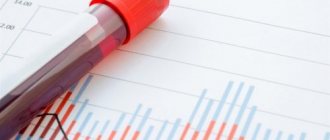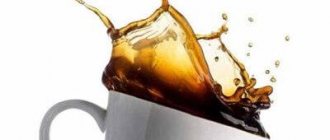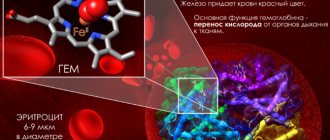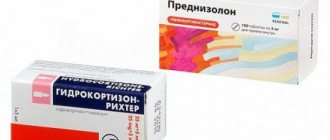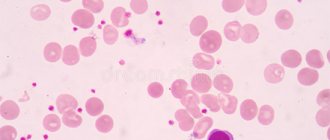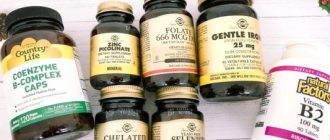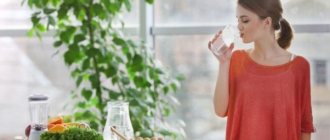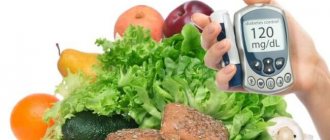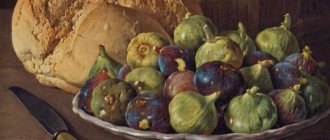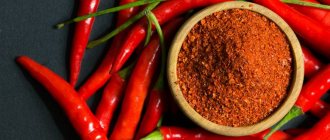The modern world is increasingly moving online, and this means working for many hours behind a computer screen. How often do you feel that your eyes are tired or even red, and the quality of your vision is gradually deteriorating? If these symptoms are familiar to you, computer vision syndrome may be the cause. We tell you by what signs you can recognize the development of the syndrome and how to prevent it.
Olga Bulgakova
, ophthalmologist, medical consultant at Essilor Academy Russia
Top foods containing iron
Women should consume at least 18 mg of iron per day, men - 10 mg. The list of products that naturally increase the concentration of hemoglobin in the blood has long been compiled.
The leaders in iron content are the following products (per 100 g):
- Pork liver 20.2 mg;
- Chicken liver 17 mg;
- Dark chocolate 12 mg;
- Oysters 9.2 mg;
- Pumpkin seeds 9 mg;
- Beef liver 7 mg;
- Beef heart 4.8 mg;
- Pork heart 4.1 mg;
- Beef meat 3.6 mg;
- Lamb meat 3.1 mg;
- Pork meat 1.8 mg;
- Chicken meat 1.6 mg;
- Turkey meat 1.4 mg;
- Mussels 6.7 mg;
- Sardines 2.9 mg;
- Chicken yolk 6.7 mg;
- Quail yolk 3.2 mg;
- Beef tongue 4.1 mg;
- Pork tongue 3.2 mg;
You should also include in your diet:
- Pistachios 60 mg;
- Spinach 13.51 mg;
- Lentils 11.8 mg;
- Peas 6.8-9.4 mg;
- Buckwheat 8.3 mg;
- Barley 7.4 mg;
- Oatmeal 5.5 mg;
- Wheat 5.4 mg;
- Peanut 5 mg;
- Dogwood 4.1 mg;
- Cashew 3.8 mg;
- Corn 3.7 mg;
- Pine nuts 3 mg.
The list indicates the amount of iron that is present in 100 grams of the product.
Features of the diet for certain groups of patients
The nutritional rules for low hemoglobin are somewhat different for different groups of patients. Nutritionists indicate:
- Adults. The iron requirement for adults is about 12 mg per day. It is much easier for adults to digest meat products and animal by-products (liver, lungs, kidneys, heart). It is recommended to include them in the diet daily, at least in minimal quantities.
- Children. The iron requirement for children is from 8 to 11 milligrams per day. Preference should be given to plant products. But you should not overuse milk, especially fatty milk, as it radically reduces the level of hemoglobin and slows down the absorption of iron. It is also recommended to include buckwheat, fish, a small amount of chocolate and halva in the diet.
- Pregnant women. The iron requirement in pregnant women is the highest and reaches 20 mg per day. As a rule, to normalize hemoglobin, they are prescribed specialized vitamin complexes. It is also recommended to eat fish, red caviar, and carrots. But it is better to avoid turmeric, parsley and most other spices that stimulate smooth muscle spasms. The doctor with whom the woman registers must talk about all this in detail.
- Elderly. Their need for iron is the smallest - only 6 - 8 mg per day, which is explained by the natural slowdown in the functionality of the cardiovascular system and bone marrow. Doctors also recommend that older people consume fish, chicken fillet (breast, since there is practically no fat in it), as well as pomegranate and beet juice.
Subtleties of increasing hemoglobin
Iron-rich foods are the best way to combat low hemoglobin.
Pomegranate fruits, which have “deposits” of iron, effectively help increase the level of this iron-containing complex protein. The juice made from them is also useful.
Red grape wine is an effective assistant in increasing hemoglobin. However, this drink is prohibited for expectant mothers.
Even a diet menu based on the use of iron-containing dishes does not guarantee success. The production of hemoglobin that occurs in the body depends not only on this substance. You also need to take care of your copper intake.
Pear is a fruit that speeds up the process of restoring healthy levels of iron-containing protein. It is often recommended by doctors for patients suffering from anemia, especially if iron supplements do not produce results.
Honey not only improves the situation with hemoglobin, but also has a restorative effect on the body. It is recommended to eat about 50-70 g of healthy sweets every day.
The absorption of iron will become better if you include foods rich in vitamin C. The best effect is provided by freshly squeezed fruit drinks and citrus fruits. Buckwheat contains folic acid, which activates the process of hematopoiesis. Bananas are recognized as a supplier of vitamin B6, without which hemoglobin cannot be normalized.
There are also a number of long-acting drugs:
- heferol;
- ferrogrademet;
- ferrograd;
- irovit;
- sorbifer durules;
- fefol;
- Tardiferon-retard.
Drugs that are effective for a short period of time are ferrous gluconate, ferrous fumarate, ferrous sulfate.
Traditional medicine offers its own methods of combating low hemoglobin.
The following recipes will be useful:
- Raisins, prunes, dried apricots and walnuts are taken in equal quantities and mixed thoroughly. The resulting mixture is processed using a meat grinder and supplemented with a small amount of honey. Every day you need to consume this sweet dish in the amount of 6 tablespoons.
- Freshly squeezed carrot juice is effective in increasing hemoglobin; 300-400 ml per day will benefit the body. Beetroot juice is mixed with honey in equal proportions, the mixture is consumed in the amount of 2 tablespoons three times a day.
- Red clover helps normalize the substance. 4 heads of the plant are dissolved in boiling water and infused for half an hour. Treatment lasts for a month, the mixture is consumed half a glass three times a day, preferably taken before meals.
- “Compote” made from fresh juices mixed in equal (100 g) parts effectively helps increase hemoglobin. Necessary juices: apple, carrot, beetroot, pomegranate. You should add 50 g of honey, consume 2 spoons three times a day.
- Blue blackberry (2 parts leaves), mixed with white clasp grass (2 parts), St. John's wort grass (3 parts). Take a tablespoon of the resulting composition and pour it with a glass of boiled water. Infuse the mixture for three hours, take a spoon three times a day for 30 days.
Iron-containing foods
Fish and seafood contain a lot of iron.
It is believed that the maximum amount of iron contains apples, pomegranate juice and liver. Is it so? Let's look at the main iron-rich food groups:
- Dark meats, offal - beef, lean parts of pig, lamb, poultry, any liver.
- Fish, seafood - any.
- Eggs - any kind.
- Cereals – wheat, rye, oats, any bran.
- Products of plant origin - legumes, spinach, beets, cauliflower and broccoli, radishes.
- Dried fruits - any.
- Nuts, seeds - any.
The list of iron-rich foods is quite large and varied. With the right approach, it is easy to create a balanced diet for meat lovers, vegetarians who do not eat meat, vegans who eat exclusively plant foods, and people with allergies to certain foods.
What vegetables increase hemoglobin?
Beetroot helps to cope most effectively with iron deficiency; it is useful in raw or boiled form. This product ensures the regeneration of iron content, “starts up” red blood cells, and enriches the blood with oxygen. Other vegetables will help increase hemoglobin.
- Carrot. The product is consumed fresh, can be added to salads, and can be boiled.
- Tomato. The vegetable improves blood composition, saturates it with essential elements, and prevents the formation of blood clots. Tomatoes do not lose valuable qualities after heat treatment.
- Potato. The vegetable is saturated not only with iron, but also with other useful elements - calcium, phosphorus, potassium, magnesium, vitamins and organic acids. It is included in the menu boiled.
- Zucchini. The product is rich in iron, potassium and magnesium. The vitamin C content helps in the absorption of iron.
All of these vegetables strengthen the body, restore the functioning of the intestines, which makes the fight against low hemoglobin more effective.
Comments from nutritionists
Quite often the question is asked: “How to increase hemoglobin for a vegetarian?”
Indeed, a certain problem exists, especially in cases where a person practices strict vegetarianism. Since the absorption of iron in the intestines is largely determined by the nature of the food and the calorie content of the daily diet, many vegetarians develop iron deficiency over time, since heme iron is absent in food products, and non-heme iron contained in cereals and vegetables has extremely low absorption. In addition, the higher fiber content of vegetarian foods interferes with the absorption of iron. Therefore, if your diet does not contain animal hematopoietic foods, you need to be especially attentive to your diet in order to sufficiently provide your body with iron.
It can be recommended to include in the diet a sufficient amount of foods rich in ascorbic acid , which significantly increases the absorption of iron. In order to prevent the development of anemia, you should periodically take iron-containing medications, for example, Ferro-Folgamm , which contains a balanced combination of anhydrous iron sulfate, folic acid , cyanocobalamin and ascorbic acid .
What fruits increase hemoglobin?
Modern research has found that the first fruit in the fight against iron deficiency is the fresh peach. 4 mg are present in 100 g of fresh product, in dried - about 3 mg. The following fruits are also relevant.
- Quince. Adding 100 g to the menu provides 3 mg of iron.
- Persimmon. Eating 100 g of fruit “gives” the body 2.5 mg of iron.
- Pear. In addition to iron (2.3 mg), the fruit is rich in zinc, manganese, cobalt, copper, and is effective in treating anemia.
- Apple. For a long time it was considered the number one fruit in the list of fruits that increase the concentration of hemoglobin in the body. When fresh, 100 g of apples contain 2.2 mg. The indicators of dried fruits look better - approximately 2.7 times more.
- Pomegranate. By eating 100 g of the product, you can replenish iron reserves by 1 mg. It is also good for its abundance of valuable vitamins.
- Apricot. It is best consumed in dried form, the concentration of essential elements increases. The fresh product is also useful - 0.7 mg. In addition to iron, apricots contain cobalt, manganese, and copper. All these elements together are useful for anemia and activate hemoglobin biosynthesis.
- Kiwi (0.8 mg) and fresh plums (0.5 mg) will be beneficial for the body.
- Watermelon is famous for its high concentration of iron; its consumption can enrich the body with other valuable substances - potassium, vitamins. Not only is the hemoglobin level restored, but also energy increases, and the person gets rid of chronic weakness.
Iron absorption is a process that occurs in the proximal intestine. There are certain foods that contain phytates and phosphates that inhibit it. The solution to the problem will be to include in the menu fruits that activate the absorption of iron and are endowed with vitamin C. The most beneficial will be all citrus fruits, melon, pineapple, and sour apples.
Which berries increase hemoglobin?
Berries will also help improve hemoglobin levels when levels are low. You should definitely eat cranberries and black currants; the products are healthy not only fresh, but also frozen. Cranberries can be mixed with sugar. Strawberries, strawberries and blueberries are also recommended for iron deficiency.
A berry that is useful for anemia and anemia is rowan. To achieve the effect, you must eat at least a tablespoon daily.
Reviews and results
- “... I periodically go on this diet, because due to heavy periods my hemoglobin level is low. As a rule, after a month of dietary nutrition and taking iron supplements, everything returns to normal”;
- “... After a long stay on a mono-diet and the development of anemia, the doctor prescribed a therapeutic diet and said that although dietary nutrition for anemia is an important stage of treatment, it is not able to independently compensate for the iron deficiency in the body. Therefore, he prescribed iron tablets.”
Which nuts increase hemoglobin?
Of the nuts that are used in the fight against low hemoglobin, walnuts are the most useful. The product contains iron, potassium, magnesium, cobalt, and a large number of vitamins. This composition allows it to stimulate the process of synthesis of the necessary substance and have a strengthening effect on a weakened body.
Eating nuts in combination with raisins is beneficial for hemoglobin. Half a glass of raisins is soaked in water for 2 hours. Then the water is drained, the raisins are mixed with walnuts (20 g is enough). The dish is divided into three servings, the approximate volume of each serving is a couple of tablespoons.
You can also try a combination of nuts with cranberries and honey. All these elements are mixed using a blender.
Fresh juices
Store-bought juices will not be useful in the battle with low hemoglobin; only natural products will be useful. Freshly squeezed drinks are perfectly absorbed and are rich in a huge number of vitamins. During the treatment process, it is worth preparing them two to three times a day and using them immediately after preparation.
Champions for eliminating iron deficiency in the body: carrot, apple, beet juice. Other freshly squeezed foods will also benefit.
- Fresh zucchini juice mixed with carrot or potato juice is extremely beneficial. It activates intestinal peristalsis, has a calming effect, and promotes the absorption of iron thanks to potassium, magnesium and vitamin C.
- Potato (freshly squeezed) juice helps solve the problem of low hemoglobin. The drink is drunk 30 minutes before a meal; it is enough to take about half a glass 2-3 times a day. Red potatoes are optimal for making juice.
- The benefits of pomegranate juice, once popular as a drink that restores iron levels in the body, are disputed by modern medicine. It is believed to cause constipation and a number of other side effects.
Carrot
Carrot juice has long been used to improve hemoglobin synthesis in the body. To restore the process, you need to drink about 2-3 glasses a day, about half an hour before meals (or an hour after meals).
Excellent results will be provided by a drink prepared from freshly squeezed juices of beets, carrots and radishes. To improve the situation with hemoglobin and increase the concentration of iron in the blood, the composition is taken in the amount of 2 tablespoons per day, treatment lasts a month.
In order for carrot juice to be better “perceived” by the body, you should eat sour cream (in a small amount) before drinking it, so the valuable components will be better absorbed.
Beetroot
Beets are a useful product for low hemoglobin, especially effective in the form of freshly squeezed juice. Good results are ensured by consuming a mixture of carrot and beetroot drinks, the recommended proportion is 2:1.
Beetroot juice should not be taken in large quantities due to its increased biological activity. The drink may have an irritating effect on the mucous membranes. Therefore, you should drink it exclusively in combination with soft formulations, not exceeding a dose of half a glass per day (divided into several doses). You should definitely keep the freshly prepared mixture in the refrigerator for 3 hours in an open container.
Apple
Unlike beet and carrot juice, which do not have an attractive taste in their pure form, apple juice is a tasty medicine. To enrich the body with iron, you can use it either alone or in combination with the juice of other vegetables (carrots, beets).
For example, you can prepare a drink by taking a quarter glass of carrot juice, a quarter of beet juice, and half of apple juice. The thoroughly mixed mixture is consumed twice a day.
All of the above products are not only effective tools for increasing hemoglobin, but also preventing problems associated with it. They should be included in the menu of pregnant women and children, if there are no contraindications.
Main symptoms
Symptoms of computer vision syndrome can manifest in different ways. However, there are a number of common signs that indicate the need to consult a doctor:
- Deterioration in the quality of vision, a feeling of blurred vision;
- Involuntary lacrimation, burning and stinging in the eyes;
- Difficulty focusing vision from distant objects to near ones and vice versa;
- Feeling of dryness and the presence of a foreign body in the eye;
- Redness, increased sensitivity to light and eye fatigue, etc.
Products for better absorption of iron
Iron is one of the most important elements necessary for normal hematopoiesis and human life. The body receives it along with everyday meals. Complete absorption of dietary iron depends on the presence of certain foods.
Products with vitamin C
An increase in foods rich in vitamin C in the diet allows you to fully absorb non-heme iron contained in legumes, nuts, dried fruits, and seeds.
Thanks to chemical reactions, the microelement is preserved in the form most suitable for absorption.
High concentrations of vitamin C are found in citrus fruits, sweet peppers, melon, strawberries, black currants, and dark green leafy vegetables.
According to one study, taking 100 mg of vitamin C with meals stimulates iron absorption by 67%! [1]
Based on these results, we can recommend drinking orange juice or other foods rich in vitamin C for better absorption of dietary iron.
Vegetables rich in vitamin C are a must for vegetarian or vegan dieters. They are essential for optimal absorption of iron found in various plant foods.
Foods rich in beta-carotene and vitamin A
The introduction of foods containing vitamin A into the diet is necessary to maintain visual acuity, maintain bone density, growth in children, and ensure full immunity. Vitamin A is converted in the human body from beta-carotene, which comes with foods.
Unsaturated hydrocarbon carotene is characterized as a powerful natural antioxidant. Oranges, peaches, red peppers, apricots, melon, pumpkin, cabbage, carrots, spinach and sweet potatoes are the best sources of beta carotene and vitamin A.
In one experiment, 100 subjects were given a grain-based diet supplemented with vitamin A for several weeks. The results showed that the absorption of iron from rice was increased by 200%, from wheat by 80%, and from corn by 140%. [2]
The introduction of beta-carotene into the daily diet allows you to optimize the absorption of iron from rice by 300%, and from corn and wheat by 180%.
Meat, poultry and fish
Meat, fish and poultry contain a high content of easily digestible heme iron. In addition, the products actively promote non-heme absorption.
Numerous medical and dietary studies suggest that the introduction of fish, chicken or beef into grain flour promotes active absorption of plant iron, more than doubling. Introducing a small amount of meat into the diet—75 grams—can increase the absorption of the non-heme form of iron by almost 2.5 times. [3]
One observation showed that just one gram of fish, meat or poultry has almost the same stimulating effect as one gram of vitamin C.
You can increase the absorption of iron from food by eating foods rich in vitamins C, A, or beta-carotene. Introducing meat, poultry and fish into the diet helps not only to get enough heme iron, but also to fully absorb the non-heme form.
Which type is most useful?
If the goal is to increase hemoglobin, then the most useful type will be the one with the highest cocoa content . Hot (meaning a drink based on milk or cream, cocoa and sugar) and dark chocolate meet this criterion. Less healthy are milk and white chocolate.
As for dietary chocolate (as well as vegetarian chocolate, made without a dairy base), everything in them also depends on the percentage of cocoa in the composition.
Nutritionists recommend in this regard to give preference to chocolate based on rice “milk” - with it the taste remains similar, as when using milk, and the load on the gastrointestinal tract is insignificant (due to the low lipid content).
Just a few years ago, confectioners developed a new type of chocolate - “ruby”. It has the same cocoa content as milk chocolate.
Foods that limit iron absorption
Foods can either stimulate iron absorption or inhibit its absorption.
Foods that contain phytates
Whole grains, cereals, soy, nuts and legumes contain a specific component - phytic acid or phytate. The intake of even a small amount of phytate into the body has an inhibitory effect on the absorption of iron.
During a medical experiment, subjects were offered 2 mg of phytate in foods. It turned out that even this amount reduces iron absorption by 18%. When 250 mg of phytate enters the body, about 82% of iron is not absorbed. [4]
If circumstances require the consumption of foods containing phytic acid, meat, fruits and vegetables containing vitamin C should be introduced into the diet. These measures will help improve the absorption of the non-heme form of iron.
Calcium rich foods
Calcium is the main material for the mineralization and health of bone tissue. We must not forget that it affects the absorption of iron. Calcium intake from dairy products or food additives inhibits these mechanisms.
Observational results show that consuming 165 mg of calcium in the form of milk, cheese or active supplements inhibits the absorption of any type of iron by more than 50-60%. The data obtained concerned doctors who recommend calcium to children, women, and patients with iron deficiency. [5]
Analysis of the studies revealed their short-term nature, carried out with a single use. Other, longer-term observations have shown that calcium in the form of supplements or from dairy products does not inhibit absorption.
To ensure maximum absorption of iron, you should not combine calcium-containing foods with iron-containing foods. It is best to consume them at different times of the day. The same rule applies to active supplements with calcium and iron.
Products with polyphenols
In the everyday diet, polyphenols are present in tea and coffee. In addition, active compounds can be found in plant foods, fruits, vegetables, grains or legumes.
Widely consumed tea and coffee, which contain a fairly high concentration of polyphenols, inhibit the absorption of the plant form of iron. A medical study has shown that one cup of black tea with a meal can suppress iron absorption by 60-70%. It is important to note that the non-concentrated drink has the same effect. If tea is taken between meals, the mechanism of inhibition of iron absorption is no more than 20%.
If you like tea or coffee, it is best to drink a cup 1-2 hours after eating iron-rich foods. This method of taking drinks containing polyphenols will help ensure optimal absorption of iron in any form.
5 more facts about benefits for the cardiovascular system
Since chocolate contains a large amount of glucose and fat (milk or vegetable), its consumption slightly increases blood viscosity. But blood pressure does not increase, since cocoa stimulates the production of endorphins - they slightly dilate the blood vessels of the brain, increasing vascular conductivity. More chocolate consumption:
- Does not significantly reduce low-density cholesterol levels. At the same time, the concentration of high-density cholesterol (often called “good”) increases slightly. This will help prevent the development of atherosclerosis. But if vegetable or trans fats were used in the production of chocolate, then its consumption will lead to a sharp increase in blood lipids. Nutritionists strongly advise against consuming cheap chocolate; it is better to make it yourself at home.
- Normalizes the balance of B-group vitamins in smooth muscle fibers. Although insignificant, this reduces the likelihood of a heart attack, stroke, and prevents rupture of the muscle fibers of the heart muscle.
- Improves vascular tone. The effect is especially noticeable on the capillaries of the brain. It is due to this that the amount of oxygen absorbed by neurons increases, which improves reaction speed and concentration.
- Prevents spasms of blood vessels and arteries. This reduces the risk of them rupturing, which is the main cause of stroke. However, because of this effect, you should not consume chocolate if you have varicose veins - cocoa in this case will lead to further thinning of the walls of blood vessels.
- Reduces the likelihood of developing coronary disease and angina. This is achieved due to the same endorphins that regulate the functioning of the endocrine system (including the pituitary gland and pancreas).
